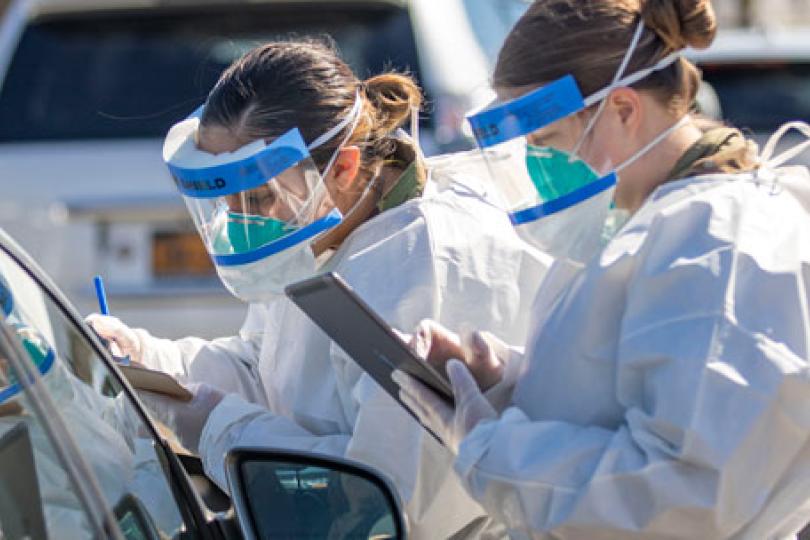What zebra mussels can tell us about errors in coronavirus tests
Editor's note: The following piece first appeared on NPR.
During the coronavirus pandemic, many scientists who usually have nothing to do with viruses or infectious disease are turning their attention to COVID-19. For example, one wildlife biologist is raising questions about the accuracy of tests that detect the coronavirus.
In normal times, Andrew Cohen focuses his attention on issues of ecology and conservation, as director of the Center for Research on Aquatic Bioinvasions.
In 2007, the state of California hired him to fight back the invasion of non-native mussels, which had been wreaking havoc on ecosystems in the eastern United States.
"We began getting reports after that of these mussels showing up all across the western U.S.," he says.
Scientists were using a clever technique to find them. They'd take a water sample and then look for the tiniest traces of genetic material from these mussels. They used a test called PCR (short for polymerase chain reaction), which vastly amplifies genetic material to look for mussel DNA. This is the same technology used to diagnose COVID-19.
The studies kept coming up with alarming results, showing signs of invasion by these pests. But Cohen grew suspicious.
"I began to realize that many of these — if not all of these — were false positives, especially when they started being reported in waters that had chemistry that would not allow the mussels to reproduce and establish themselves," he says.
Cohen wanted to understand why these tests were going awry, so he could spread the word to the labs that were using them. "I eventually turned to the medical literature to look at assessments that had been done of medical diagnostic labs that used PCR-based testing in humans."
Cohen discovered that false positives were actually fairly common. The best labs reported few if any, but other labs reported up to 8% of their positive results were false positives. The average was around 2% false positive.
Fast forward to March 2020. Cohen started thinking about this issue of false positives. He was skeptical of reports that people with absolutely no symptoms were nonetheless getting positive PCR test results for the coronavirus.
"I began wondering whether these asymptomatic carriers weren't in large part or in whole part the human counterparts of those false-positive results of quagga and zebra mussels in all those water bodies across the West," he says.
He dug in and found that in previous outbreaks, such as SARS, scientists ran a second PCR test before confirming a case. The Centers for Disease Control and Prevention started to do that as well during the earliest days of COVID-19. Labs capable of running their own tests were also told to send a sample to CDC for confirmation. But that system was quickly abandoned as the number of cases grew and the ability to test remained limited.
Cohen, working with physician colleagues in Hawaii, surveyed procedures for coronavirus testing around the world, including the governments of Canada and the U.K., as well as the World Health Organization and the CDC, but found no requirement for retesting positive samples. (The CDC recommends that a patient who has recovered from coronavirus infection in the hospital be tested twice before being discharged, but the concern there is a much more common problem with these tests: falsely negative results).
So, Cohen updated the survey of medical testing he'd done to explore the cause of false positives in wildlife testing. He posted that paper online.
It hasn't been peer reviewed, but Dr. Bobbi Pritt, a clinical microbiologist who chairs the microbiology committee for the College of American Pathologists, says his numbers seem reasonable.
"There's no 100% perfect test," says Pritt, who works at the Mayo Clinic.
